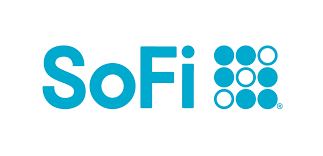You lose your job, your son breaks his leg, and your car blows a gasket. Cha-ching. That’ll be $10,000, minimum. If you have an emergency fund, you pay your expenses and move on. If not, you may need to take out a loan and spend the next year paying it back, plus interest.
An emergency fund keeps you safe from debt. But how much money should you keep in it? Common wisdom (and sound financial advice) suggests you should keep three to six months of expenses in an emergency fund. Some gurus, like Suze Orman, suggest you save even more.
Let’s assume we’re the typical American being paid an average salary. We’re aiming to save somewhere in the middle — more than the bare minimum, less than what you’d need to survive a zombie apocalypse. Below, we’ll dig into how much money you should keep in an emergency fund.
Six months is the sweet spot
Six months’ worth of income is a sizable emergency fund. It’s enough to get you through half a year of joblessness or pay for a major surgery without sending you into debt.
Our Picks for the Best High-Yield Savings Accounts of 2024
|
SoFi Checking and Savings 
APY up to 4.60%
|
APY up to 4.60%
|
Min. to earn $0 |
|
Citizens Access® Savings 
|
Min. to earn $0.01 |
|
|
American Express® High Yield Savings 
APY 4.25%
|
APY 4.25%
|
Min. to earn $1 |
But how much is that, exactly?
The average American household spent $6,081 a month in 2022. This is according to the most recent Consumer Expenditure Survey from the U.S. Bureau of Labor Statistics (BLS). To save six month’s worth of living expenses, the average household would need to save $36,486.
But that includes nonessentials like entertainment and alcohol. To save for essentials like food, housing, and transportation, the average American household would need to save $22,974.
Keep in mind that this number applies to an entire household. If you’re going at it solo, you may need to save much less to hit the sweet spot. The same applies if you spend less than average.
Six months’ worth of income is okay, too
Maybe you don’t know your yearly expenses. No problem. You can also calculate how much to save by multiplying your income. This is instead of multiplying your spending.
The typical American household earned about $61,937 in 2022, according to research by The Motley Fool Ascent. To save six months’ worth of income, the typical American household would need to save $30,968.50 to hit the sweet spot. That’s a comfortable margin of safety.
What if you want to save the bare minimum?
Experts advise keeping at least three months’ worth of spending or income in your emergency fund. The typical American household would need to save $11,487 to cover three month’s worth of essential expenses.
If that’s too much effort, you can simply estimate your income and multiply that by three. That should get you the bare minimum you need to pad a proper emergency fund.
In some cases, less is more. You don’t necessarily want to keep all your savings in an emergency fund. The point is just to keep some money saved for unexpected bills. Think medical bills, automobile repairs, or between-jobs money.
A high-yield savings account can help you save
You can put your emergency fund anywhere. But there are advantages to keeping it in a high-yield savings account. You can access the money when you need it most, and you don’t pay a penalty for doing so. (Certificates of deposit charge you for early withdrawals.) Plus, you earn interest on your deposit, helping you save faster.
As of May 2024, Federal Reserve rates are historically high. Some of the best high-yield savings accounts earn you more than 5% interest. With $10,000 in an emergency fund, you’d earn $500 per year. It’s more than you’d earn keeping the money in a typical savings or checking account.
Regardless of how much you save, something is better than nothing. Building an emergency fund is often an ongoing process, one with many ups and downs. Life happens, and it does so without warning. Do what you can to hit that sweet spot; your wallet will thank you.
These savings accounts are FDIC insured and could earn you 11x your bank
Many people are missing out on guaranteed returns as their money languishes in a big bank savings account earning next to no interest. Our picks of the best online savings accounts could earn you 11x the national average savings account rate. Click here to uncover the best-in-class accounts that landed a spot on our short list of the best savings accounts for 2024.
